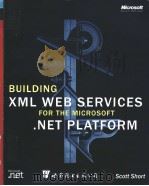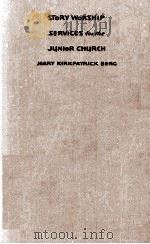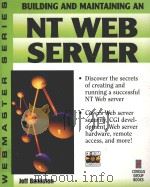《BUILDING XML WEB SERVICES FOR THE MICROSOFT.NET PLATFORM》
| 作者 | 编者 |
|---|---|
| 出版 | 世界图书出版公司 |
| 参考页数 | 426 |
| 出版时间 | 没有确切时间的资料 目录预览 |
| ISBN号 | 无 — 求助条款 |
| PDF编号 | 819503298(仅供预览,未存储实际文件) |
| 求助格式 | 扫描PDF(若分多册发行,每次仅能受理1册) |

1 Why Web Services?1
Web Services Building Blocks4
Web Services Design Decisions5
Choosing Transpo Protocols5
Choosing an Encoding Scheme6
Choosing a Formaing Convention7
Choosing Description Mechanisms8
Choosing Discove Mechanisms9
What's Missing from Web Services?9
Summa10
2 Creating a Basic Web Service11
A Simple Commerce Application12
Creating a Web Form12
Creating a Payment Web Service15
Updating the Order Web Form17
The Web File Share Application19
Creating the WebFileShare Web Service19
Creating the WebFileUtil Program21
Summa26
3 SOAP29
Anatomy of a SOAP Message31
SOAP Actors32
The Header Element32
The Body Element36
Using SOAP RPC Messages38
SOAP Encoding41
Simple Types41
Compound Types41
Passing Parameters by Reference49
Protocol Binding54
Summa56
4 XML Schema59
Describing XML Documents60
Built-in Datatypes62
Integers63
Strings63
Binary Data65
Namespaces67
targetNamespace Aribute67
xmlns Aribute68
schemaLocation Aribute70
noNamespaceSchemaLocation Aribute71
XML Schema and XML Schema Instance Namespaces72
Element Definitions72
Custom Datatypes73
Simple Types73
Complex Types78
Element and Aribute Groups86
Namespace Scoping86
Polymorphism89
Restricting Inheritance92
Summary95
5Using WSDL to Document Web Services97
WSDL Document Syntax98
definitions Element99
types Element100
message Element102
poType Element104
binding Element106
service Element108
Extensibility Elements109
SOAP Extensions109
HTTP GET/POST Extensions113
import Element120
Documentation120
The Calculator Web Service WSOL Document121
Summary125
6 ASP.NET127
Creating an ASP.NET Web Service128
Transport Protocols and Bindings134
Web Service Documentation136
Raising Errors140
SOAP Encoding Styles143
Encoding References146
Interface Inheritance150
Managing State155
Session State155
Application State160
Defining and Processing SOAP Headers165
Processing Unknown Headers172
Using SOAP Extensions173
SOAP Extension Aributes174
SOAP Extension Class176
Using the WSDL Utility to Generate Proxy Code190
Proxy Class192
Cookies201
Summa202
7XML Serialization205
Controlling XML Serialization206
Defining the Root PurchaseOrderDatatype207
Defining the Items Array214
Creating Derived Datatypes220
Creating an Open PurchaseOrder Schema221
Defining the AcceptPO Web Method223
Server-Side Validation224
Implementing Custom Serialization225
Summa226
8Using Remoting to Build and Consume Web Services227
Remoting vs. ASPNET227
The Grabber.NET Application229
Remoting Architecture230
Creating an IIS-Hosted Web Service232
Creating a WinForm-Hosted Web Service236
Accessing Web Services241
Adding SOAP Headers247
Generating WSDL250
Suds WSDL Extension Elements251
Summary252
9Discovery Mechanisms for Web Services255
UDDI256
UDDI Architecture256
UDDI API257
UDDI SDK260
UDDI Enterprise Server261
Registering the Purchaser262
Registering the Supplier277
Visual Studio .NET Integration282
DISCO284
Visual Studio .NET and DISCO285
Summa287
10Building Secure Web Services289
An Introduction to Threat Modeling289
Brainstorming Threats290
Choosing Techniques to Mitigate the Threats292
Web Service Security Technologies295
Web Seices Authentication296
Web Seices Authorization301
Web Seices Privacy and Integrity302
Security Technologies in the .NET Framework304
Future Web Seice Security Technologies306
Common Security Mistakes306
Mistake #1: Storing Secret Data Insecurely307
Mistake #2: Connecting to SOL Seer Incorrectly308
Mistake #3: Building Insecure SOL Strings309
An In-Depth Example309
The Insecure Version (Do Not Try This at Home!)309
A Secure Solution311
Summary313
11Debugging Web Services315
Interactive Debugging315
The Basics of Debugging316
Remote Debugging317
Web Services-Friendly Call Stack318
Information the Debugger Needs320
Assembly Metadata320
Program Database321
Tracking Information322
Debugging Dynamically Compiled Source Code325
Instrumenting Web Services326
Tracing326
Event Log336
Performance Counters338
Tips and Tricks for Debugging343
Summa344
12Scalability and Availability347
Scaling Your Web Service348
Scaling Up348
Scaling Out349
Overcoming Scalability Bolenecks353
Maintaining High Availability354
Highly Available Scale-Up Resources355
Highly Available Scale-Out Resources357
Programming Against a Highly Available Resource358
Third-Party Web Services and Availability359
Failing Over to an Alternative Web Service360
Creating an O line Mode of Operation363
Optimizing Performance364
Caching365
Summa372
13The Future of Web Services373
Introducing .NET My Services374
Securing .NET My Services377
Working with .NET My Services378
The Global XML Web Services Architecture (GXA)382
WS-Inspection384
WS-Security and WS-License387
WS-Routing393
WS-Referral396
WS-Referral Registration Message Exchange398
Dynamic Application Topologies399
Orchestrating Web Services400
Summa405
AppendixXML Schema Built-in Types407
lndex411
《BUILDING XML WEB SERVICES FOR THE MICROSOFT.NET PLATFORM》由于是年代较久的资料都绝版了,几乎不可能购买到实物。如果大家为了学习确实需要,可向博主求助其电子版PDF文件(由 世界图书出版公司 出版的版本) 。对合法合规的求助,我会当即受理并将下载地址发送给你。
高度相关资料
-

- Social Services For The Elderly
- 1985 The Free Press
-

- THE XML HANDBOOK
- 1998年 PRENTICE HALL PTR
-

- STORY WORSHIP SERVICES FOR THE JUNIOR CHURCH
- 1927 NEW YORK GEORGE H. DORAN COMPANY
-

- The Aga Khan Award for Architecture : building for tomorrow
- 1994 Academy Editions
-

- SERVICES AND ENVIRONMENTAL ENGINEERING ESSENTIAL INFORMATION FROM THE BUILDING RESEARCH ESTABLISHMEN
- 1977 THE CONSTRUCTION PRESS
-

- MULTIPRENEURING
- 1996 A FIRESIDE BOOK
-

- PENAL SERVICES FOR OFFENDERS
- 1987 AVEBURY
-

- Cultureal Diversity A Primer for the Human Services
- 1999 Wadsworth Publishing Company
-

- The Stanford Graphbase A Platform for Combinatorial Computing
- 1993 ACM Press ; Addison-Wesley
-

- WEBMASTER SERIES BUILDING AND MAINTAINING AN NT WEB SERVER
- 1996 CORIOLIS GROUP BOOKS
-

- UNTANGLING THE WEB
- 1998 ST.MARTIN'S PRESS
提示:百度云已更名为百度网盘(百度盘),天翼云盘、微盘下载地址……暂未提供。➥ PDF文字可复制化或转WORD



